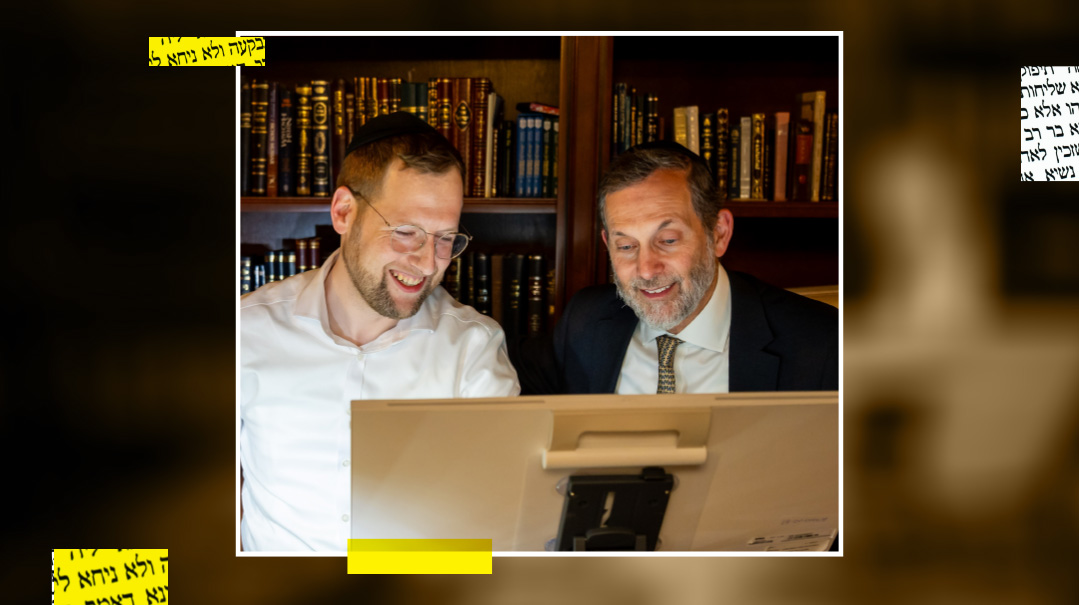In Totality

For a few brief minutes along the path of the eclipse, the world looked up

Project Coordinator: Gitty Edelstein
For an all too brief moment, the world quieted as the sky darkened with the magnificent heavenly display of three celestial bodies in perfect alignment. Few experiences can compare to watching nature shift as an eclipse enters its totality, and the resulting awe is a strong unifier in a sharply divided world.
Mishpacha shares impressions, sights, and scenes from the ground, when for a few brief minutes along the path of the eclipse, the world looked up
Sunblock
Unless you were observing a complete media blackout or somehow missed the eclipse-related tchotchkes in your local grocery store display, you’ve surely heard about the total solar eclipse on April 8, 2024, along with a bunch of complicated scientific terms thrown around by people explaining how it happens and what it looks like.
Lost? Here’s a basic explanation of last week’s cosmic event and how it works.
Round and Round We Go
The earth’s orbit around the sun takes 365 days, six hours, and nine minutes to complete. Similarly, the moon revolves around the earth on a path that takes roughly a month. Naturally, there will be times when the celestial bodies come into alignment in their revolutions; that’s called an eclipse.
A solar eclipse happens when the moon passes between the earth and the sun, blocking the sunlight for a few minutes until the moon slowly moves out of the way. A lunar eclipse is when the earth is positioned directly between the sun and the moon, causing earth’s shadow to fall on the moon and make it look dark red.
While eclipses happen fairly often, the reason they aren’t more common is because the moon’s orbit is slightly higher than the earth’s, meaning the moon is usually slightly higher or lower than the sun. In order for any form of an eclipse to happen, the moon needs to cross into earth’s orbital plane at a specific location that places it precisely between the two other celestial bodies. The type of eclipse that will be visible on earth will depend on what part of their orbit the sun, moon, and earth are on, which is why total eclipses happen less frequently than other forms of eclipses.
Diamonds and Beads
The path of totality, which is roughly 100 miles wide, refers to the areas on land that can witness a total solar eclipse.
The 2017 and 2024 eclipses were unusual in that they occurred over large contiguous (attached) swathes of land, so millions of people could witness one for the first time in their lives. Since some 72 percent of the planet is covered in water, most eclipses occur over the ocean, with bits of land seeing a partial event. The areas surrounding the path of totality won’t witness a full eclipse, but they will see a partial blockage depending on their distance from the path of totality.
It is unsafe to look at an incomplete eclipse directly; the sun’s rays will burn your retinas. An eclipse can be viewed safely without protective eyewear only once the sun is completely obstructed by the moon.
During a solar eclipse, the sky slowly darkens as the moon starts to cross in front of the sun, in a process that can take hours. In the seconds before the moon completely obstructs the sun, an eagle-eyed viewer can spot little dots of sunlight that stream through the mountains and valleys along the moon’s surface until the moon locks into position and they start to go dark. These little dots are known as Baily’s beads, named for British astronomer Francis Baily, who described them after the eclipse of 1836 “like a string of beads” that disappear one by one when the eclipse nears totality.
After the 1842 eclipse, Baily noted that the moon was suddenly “surrounded with a corona or kind of bright glory,” thus introducing the word “corona” to eclipse lexicon. When a single bright spot remains on the edge of the circle — the “diamond ring effect” — totality is about to occur. Once that “diamond” disappears and there is no more direct sunlight, it is safe to view the eclipse with the naked eye. The eclipse ends when a diamond and corona reappear on the opposite ends of the moon, followed by Baily’s beads.
Oops! We could not locate your form.







